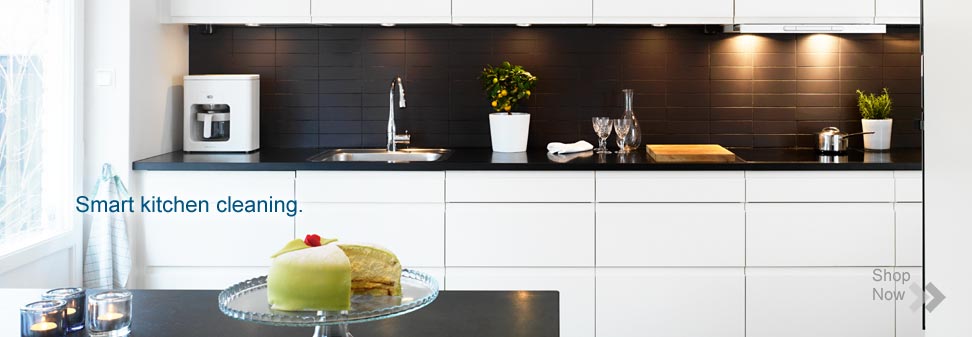Kitchen Cleaning Tips
Keep kitchens clean
Kitchen sinks, refrigerators, cutting boards and cleaning cloths generally become bacteria infested if they are not cleaned properly after use. It is usually sufficient to wipe off stainless steel surfaces such as faucets, stove tops and refrigerators with a damp microfiber cloth. The cloth will remove greasy stains and bacteria, and it leaves no streaks or marks. Use a little environmentally friendly cleaner if the stains are difficult to remove with water alone.
Clean stovetops while still warm
It is easier to clean stovetops (gas and electric) while they are still warm. Wipe off right after usage, or turn on electric stovetops for a short while before cleaning (low heat).
Keep your cutting board clean
There is a great deal of risk for bacteria build up on surfaces where food is handled, for example on cutting boards. Make sure they are washed properly after each use, either in the dishwasher or by using hand dishwashing liquid. Another method is to rub the cutting board thoroughly with salt. Be especially careful when handling raw meat, chicken or fish as they can be carriers of unhealthy bacteria. For example, do not mix vegetable and meat cutting knives, and wash cutting boards thoroughly directly after each use so that bacteria is not allowed to spread to other areas. We recommend that you use separate cutting boards for chicken, meat, vegetables and fish.
Cleaning kitchen floors
Bread crumbs and other spills easily end up on the floor. Remove them right away with a broom or mop to prevent them from ending up in the corners or drying, which makes them more difficult to clean. Use a dustpan set or a dust mop to pick up dust, hair and bread crumbs. Use a wet or damp microfiber mop (only water) or add a small amount of environmentally friendly cleaner for a fresh fragrance when cleaning the floor. Remember to vacuum and clean behind and under the refrigerator and stove from time to time.
Sweep floors after eating
If you sweep the floors directly after eating, you will keep them nice and tidy with a minimal amount of effort.
Cleaning cabinets
Clean your kitchen cabinets and refrigerator inside and out with a damp microfiber cloth from time to time. Use environmentally friendly cleaner for heavy soiling. Remember to remove old food and leftovers from the refrigerator and pantry on occasion. Put some newspaper or plastic wrap over kitchen cabinets, and change it periodically. Doing so will help avoid dust and grease stains.
Microwave oven and oven
Both the microwave oven and regular oven are easier to clean if a pot or bowl of hot water is heated up inside. When the inside of the oven is moist, dirt and grease can be much more easily removed with a microfiber cloth. Add some drops of lemon to the water for a fresh fragrance.
Do not allow dishes to sit
If you are unable wash your dishes right away, you should at least rinse them since doing so will simplify washing later. However, do not wait too long to wash the dishes since dirty dishes offer a growing ground for bacteria, mildew and bad odor. When washing up, use environmentally friendly hand dishwashing liquid. Avoid washing the dishes under running water; rather fill the sink or washing-up bowl with warm water and rinse the dishes there. If you have a dishwasher, please make sure it is full before starting it. Use environmentally friendly hand dishwashing liquid or tablets.
Washing kitchen textiles
Remember to wash your kitchen towels and cooking mitts since food easily sticks to them. Kitchen curtains also need to be occasionally dusted off and washed.




